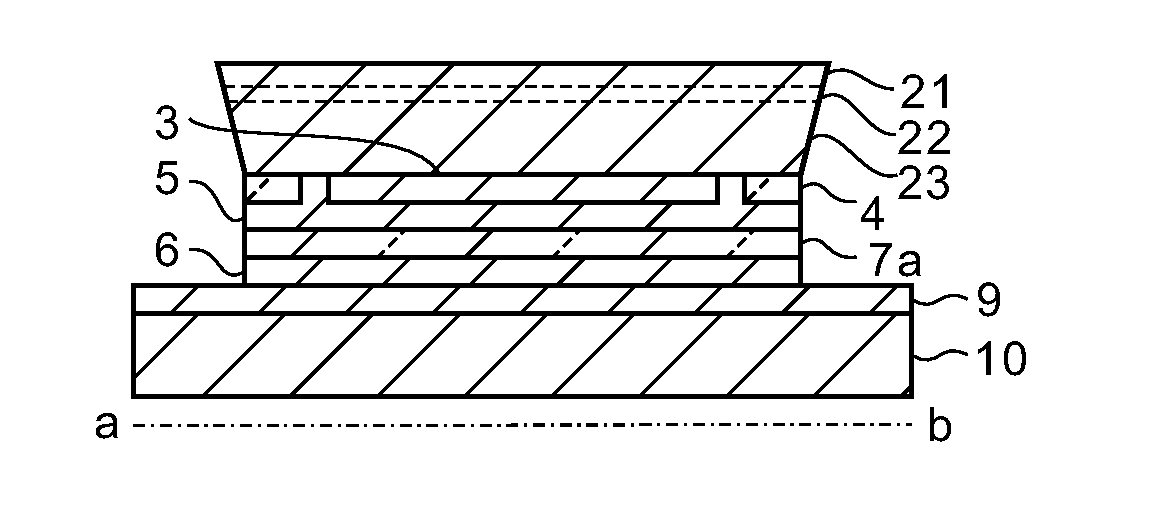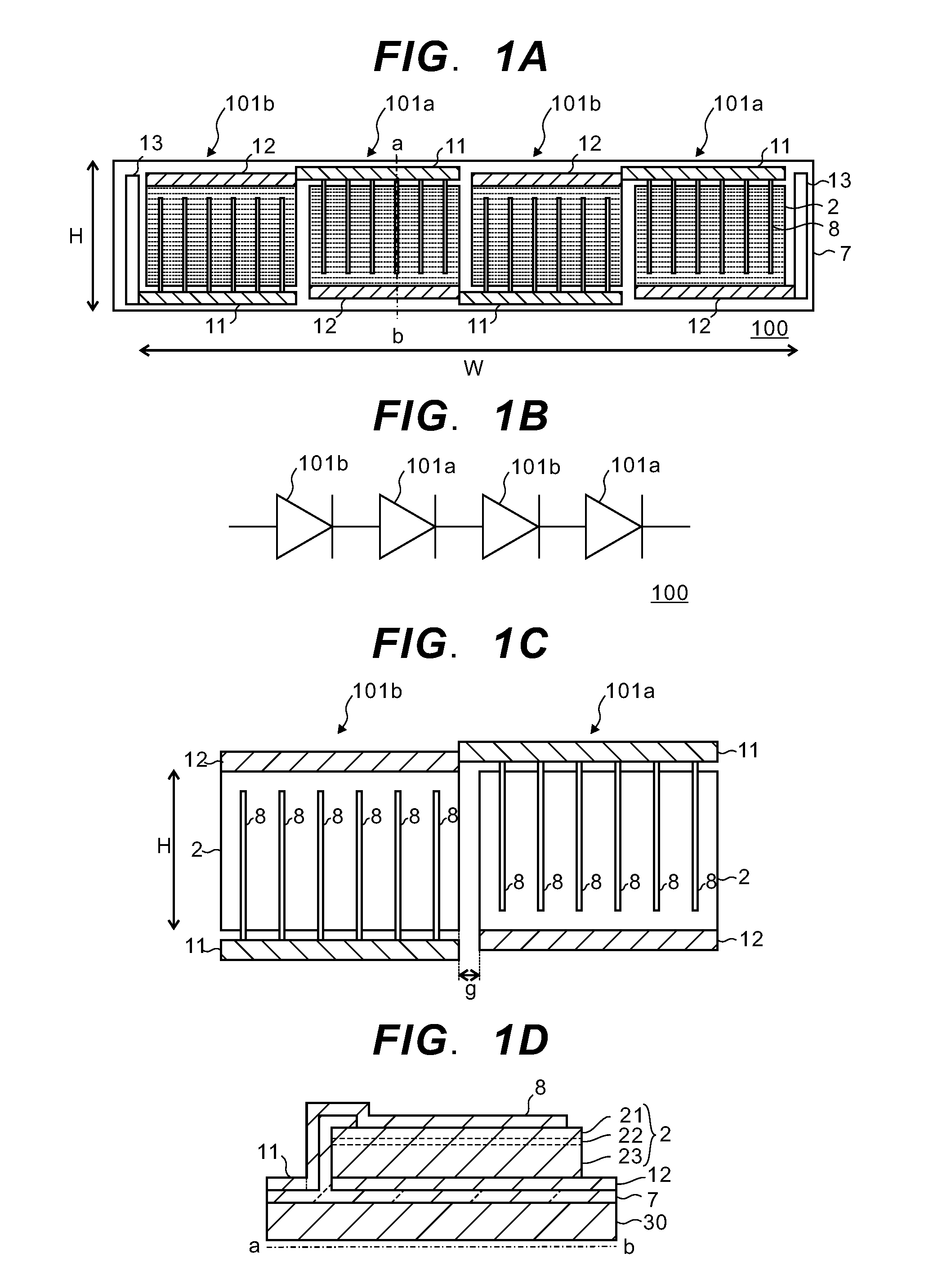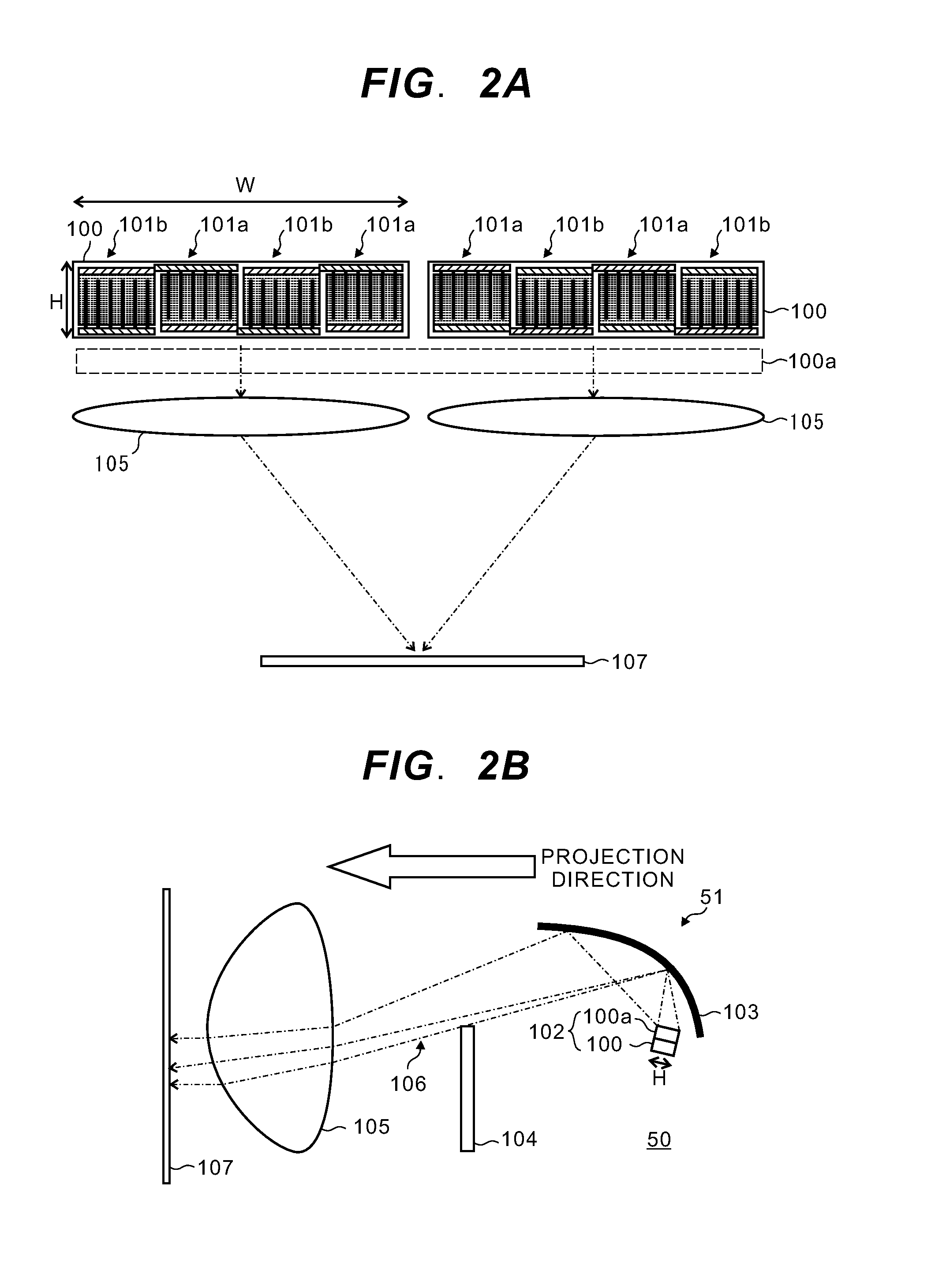LED array capable of reducing uneven brightness distribution
a technology of led arrays and light emitting elements, which is applied in the direction of lighting and heating apparatus, instruments, transportation and packaging, etc., can solve the problems of uneven flow of electric current in the element, increased number of led elements is not preferable, and current decreases from the right power supply side to the left side, so as to reduce uneven brightness and reduce uneven brightness
- Summary
- Abstract
- Description
- Claims
- Application Information
AI Technical Summary
Benefits of technology
Problems solved by technology
Method used
Image
Examples
Embodiment Construction
[0029]FIG. 1A is a schematic plan view of an LED array 100 according to a first embodiment of the present invention, and FIG. 1B is a circuit diagram of the LED array 100. FIG. 1C is a schematic plan view of LED elements 101a and 101b composing the LED array 100. FIG. 1D is a simplified cross sectional view of the LED array 100 cut along a line a-b in FIG. 1A. Moreover, hatching of the light emitting part 2 in FIG. 1A indicates brightness distribution wherein increase in density of hatching indicates increase in brightness.
[0030]The LED array 100 according to the first embodiment of the present invention is an array of four nitride semiconductor light emitting elements (LED elements) 101 (101a and 101b) connected in series and arranged along a W direction in the drawing on a supporting substrate 30 which is long in the W direction and on which an insulating layer 7 is formed. Each one of the LED elements 101 is an oblong which is long in the W direction and consists of a GaN-based l...
PUM
 Login to View More
Login to View More Abstract
Description
Claims
Application Information
 Login to View More
Login to View More - R&D
- Intellectual Property
- Life Sciences
- Materials
- Tech Scout
- Unparalleled Data Quality
- Higher Quality Content
- 60% Fewer Hallucinations
Browse by: Latest US Patents, China's latest patents, Technical Efficacy Thesaurus, Application Domain, Technology Topic, Popular Technical Reports.
© 2025 PatSnap. All rights reserved.Legal|Privacy policy|Modern Slavery Act Transparency Statement|Sitemap|About US| Contact US: help@patsnap.com



